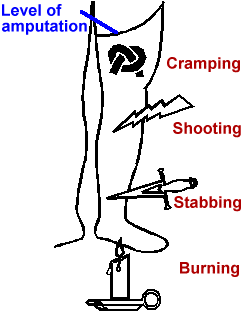What can you do if you have pain in a part of your body that is no longer there – in other words, phantom pain? Unfortunately, phantom sensations are fairly common after amputation or trauma, but previously, treatment was not very effective.

Ramachandran, a neuroscientist at UCSD, made a breakthrough by suggesting that patients “trick” their brains into thinking they are exercising the missing body part. He did this by using a mirror to have patients look at a reflection of the normal body part to make it seem like the phantom limb was still there and moving. It worked to decrease unpleasant sensations and pain!
A new study by Ugler expands on this work and shows that phantom exercises help decrease pain in patients with traumatic amputations and phantom limb pain. Although a small study, the researchers showed that “exercising” the phantom limb results in better pain relief than just general exercise.
Ugler had patients do the same movement with both their intact limb and the amputated area. Let’s say someone had his left arm amputated and had phantom pain in his left hand. The patient would move his right hand, and imagine moving his left (amputated) hand in the same ways. It was found that this would decrease pain.
Ugler hypothesized that several factors may be helping, including:
- exercise and movement of the remaining portion of the limb
- visually watching normal movement of the opposite (intact) limb
- seeing and using a prosthetic limb may visually give normalizing signals to the brain
- a relaxation effect following movement of the amputated limb
The theory behind this type of treatment, as well as mirror therapy, is that the problem is primarily in the brain, not the site where the pain is felt. By re-training the brain, the brain error is reduced, and the pain decreases. It’s encouraging that further work in this exciting area of treatment is occurring!
The full study is in the Journal of Rehabilitation Medicine, June 2009, Volume 41, pages 582-584.
